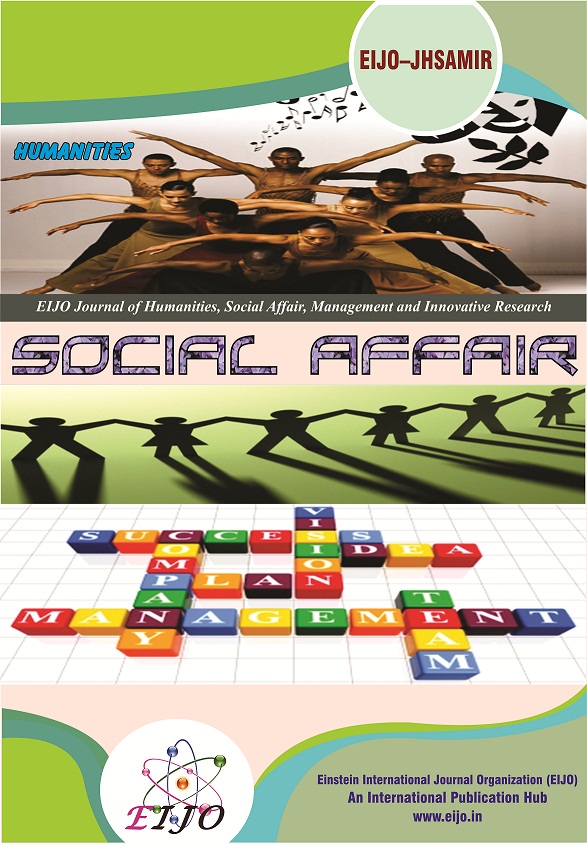JOURNALS || EIJO Journal of Humanities, Social Affair, Management and Innovative Research (EIJO – JHSAMIR) [ ISSN : 2455 - 927X ]
ABSTRACT
The Death penalty forms an integral part of the criminal justice system in the Indian State. It can be defined as the lawful infliction of death as a punishment for a wrongful act. In this paper the scope and validity of death penalty in the context of the Indian judiciary shall be discussed. It analyses the constitutional validity of death sentence and the circumstances under which it may be granted with the help of relevant cases and the ‘rarest of the rare’ test that was prescribed by Supreme Court in Bachan Singh case.
This paper also examines and elucidates strong reasons as to why the existence of death penalty is important to the peace and tranquility of the society at large, this shall be followed by a brief of some of the most famous and important cases relating to the subject matter decided by the Indian Courts. The aim of this paper is to give the readers a clear understanding of the position of the Indian courts in regard with awarding of capital punishment
Keywords: Crimes, death penalty, executive, judiciary, Rarest of rare case.
[1]. Pillai, P S A, Criminal Law,9th Ed., Butterworths India, New Delhi, 2000, p. 286.
[2]. Rajendra Prasad v. State of Uttar Pradesh,AIR 1979 SC 916, 946.
[3]. http://indiankanoon.org/doc/543586/.
[4]. Gower Earnest: A Life for Life: 56 (1956).
[5]. Gaur, K D, Criminal Law: Cases and Materials,3rd Ed., Butterworths India, New Delhi, 1995, p. 295.
[6]. Franklin E. Zimring, The Unexamined Death Penalty: Capital Punishment and Reform of the Model Penal Code, http://www.jstor.org/stable/4099437.
[7]. Franklin E. Zimring, The Unexamined Death Penalty: Capital Punishment and Reform of the Model Penal Code, http://www.jstor.org/stable/4099437.
[8]. http://www.deathpenaltyworldwide.org/methods-of-execution.cfm.
[9]. Justice Y.V.Chandrachud & V.R.Manohar. The Indian Penal Code.30thEdition Reprint 2006.wadhwa & company Nagpur.
[10]. http://indianexpress.com/article/explained/explained-in-the-supreme-court-some-questions-of-life-and death/#sthash.aiem5gLL.dpuf.
[11]. A.I.R. 1973, S.C-947.
[12]. A.I.R. 1979, S.C-916.
[13]. A.I.R.1980 S.C-898.
[14]. A.I.R. (1983)3 SCC470.
[15]. AIR 1992 SC 395; 1992 SCC (Cri) 24.
[16]. AIR 1983 SC 473.
[17]. In Bachan Singh which upheld the constitutional validity of the death penalty, Sarkaria J., speaking for the majority, said that if Article 21 is understood in accordance with the interpretation put upon it in Maneka Gandhi, it will read to Say that: No person shall be deprived of his life or personal liberty except according to fair, just and reasonable procedure established by valid law, at page 730.
[18]. If the accused is convicted, the Judge shall, unless he proceeds in accordance with the provisions of section 360 hear the accused on the question of sentence, and then pass sentence on him according to law.
[19]. When the conviction is for an offence punishable with death or, in the alternative, with imprisonment for life or imprisonment for a term of years, the judgment shall state the reasons for the sentence awarded, and, in the case of sentence of death, the special reasons for such sentence.
[20]. State of M.P. vs Molai 1999 Cr.L.J. 2698.
[21]. http://shodhganga.inflibnet.ac.in/bitstream/10603/12841/10/10_chapter%204.pdf.
[22]. A.I.R.1980 S.C-898.
[23]. (1983) 3 SCC 470.
[24]. 2004 (2) SCC 338.
[25]. Appeal (crl.) 1621 of 2007.
[26]. [(1994) 2 SCC p.220]
[27]. {[1993] 4 SCC 645}.
[28]. {1992 SCC [CRI] 24].
[29]. {1989 SCC [CRI] 413}.



